A trip to Athens wouldn’t be complete without visiting Greek and Roman ruins, but can you tell them apart? Don’t worry, we’ll take you through the most important Greek ruins Athens has to offer.
Exploring ruins in Athens could keep you occupied for weeks, but if you only have time to see the highlights, here are the best Greek ruins in Athens you can’t leave without seeing.
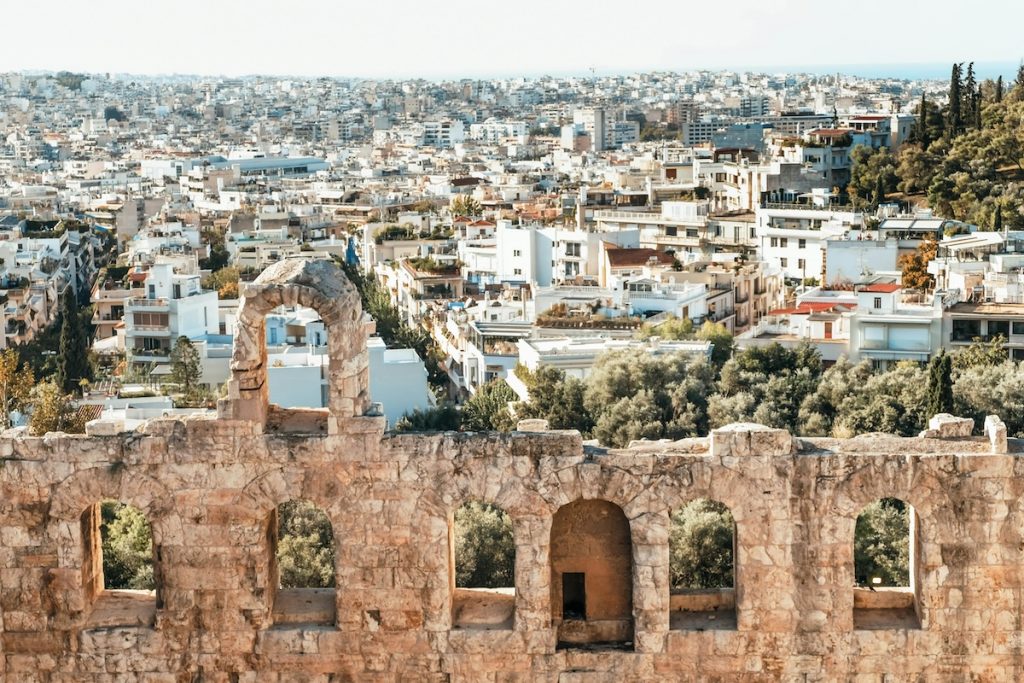
What are the most important Greek ruins in Athens?
Athens is a city with layers and overlapping layers of history– it has been inhabited since the 11th millennium B.C.. Dozens of wonders from ancient times still make up the terrain of the modern city, and ruins peek out of almost every corner and neighborhood.
We’ve gathered our list of top ancient Greek ruins in Athens to give you an insider’s guide to the most impressive and important Greek ruins you can see in the city. Let’s start with perhaps the most famous – the Acropolis.
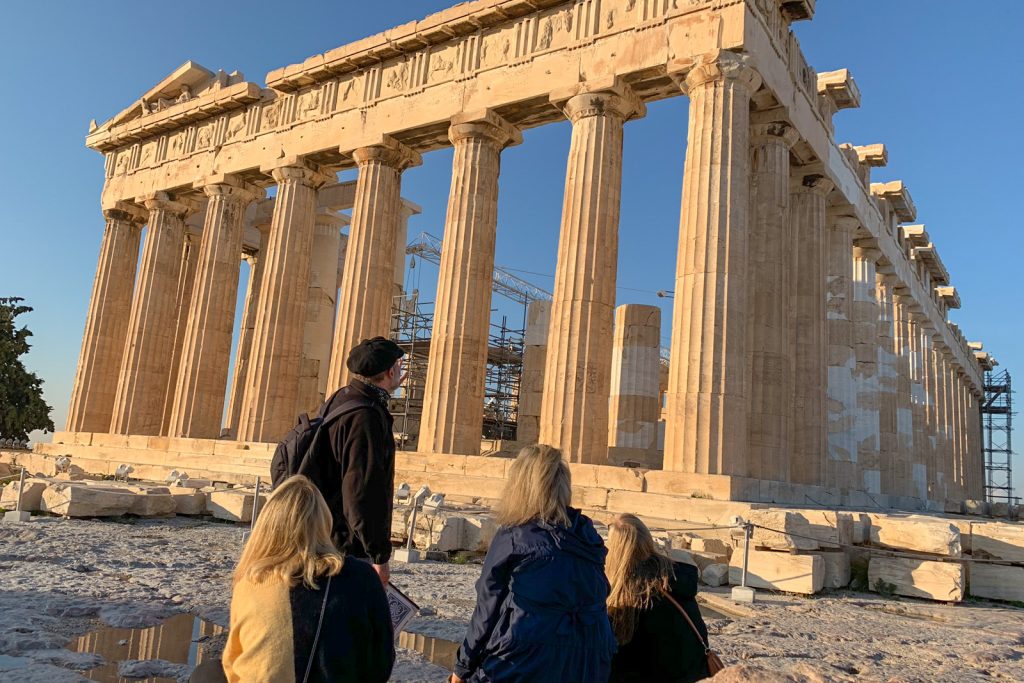
What exactly is the Acropolis?
The Acropolis (Athens, 105 58) is an ancient citadel that presides over all of Athens– atop the sheer cliff face stand monumental columns which are visible from the streets and cafes and parks for miles. It is the heart of the modern city, as it was the ancient one.
The Acropolis is the name of the hill, also called the Sacred Rock, but the site is made up of several different ruins clustered together, each which served a different purpose. If you begin your walk in the neighborhood of Plaka, you will hit each of these incredible structures one by one. Some of the most impressive are:
The Theater of Dionysus
This ancient theater is located right inside the entrance of the Acropolis archaeological site, on the lower sloping sides of the hill. Performances were put on during the festival of Dionysus, and thus this ancient theater is where almost every ancient Greek play premiered– the great works of Aeschylus, Sophocles, Euripides were all put on here.
Propylaea
The Propylaea was the main entrance to the Acropolis of Athens and was the pathway up to the ancient citadel tread by the ceremonial Panathenaic Way procession. Today you too can walk through the great marble columns on your way up to the top.
Temple of Athena Nike
Don’t miss that off to the side of the Propylaea you will see the Temple of Athena Nike. This is dedicated to Athena in her form as a goddess of victory and is held up by curling ionic columns.
Parthenon
The most majestic and most important building on the Acropolis is the Parthenon. This ancient temple to Athena is almost fully intact and will truly take your breath away with the magnitude of the columns. The temple was made up of almost 22,000 tons of marble brought in from nearby Mt. Pentelus.
Erechtheion
This smaller temple on the North side of the Acropolis was also dedicated to Athena. It is most famous for its Caryatid columns– columns sculpted in the shape of four women bearing the weight of the building atop their intricately carved heads.
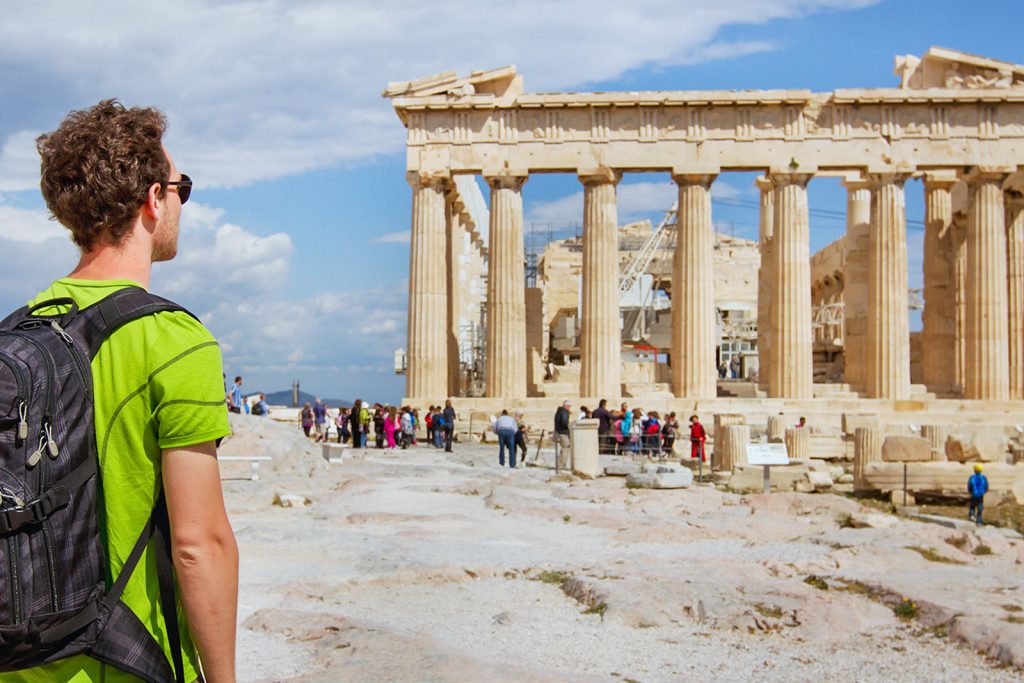
Traveler’s tip: Want to learn more about visiting Athen’s top monument? Check out our 9 Tips for Visiting the Acropolis. From opening times to the best ways to avoid the crowds, we’ve got you covered!
The unique monument of Lysicrates
The monument of Lysicrates is located not far from the Acropolis and stands alone amongst more modern buildings. It is the only surviving example of a choragic monument–a monument built to commemorate the winner of an ancient Greek choral prize.
This one was dedicated to Lysicrates in 334 BC. The monument has small marble columns arranged in a circle on top of a pedestal. Above that is a delicately carved frieze showing a favorite story from Greek mythology of the god Dionysus turning some pirates into dolphins.

The sprawling cemetery of Kerameikos
The ancient cemetery of Kerameikos (Ermou, 148) is a lessor-known archaeological site, but its truly fascinating. The cemetary is filled with hundreds of tombs and grave-markers that illuminate not just how the ancient Athenians died, but also how they lived.
Inside the site are also two monumental gates that the Athenians used as starting points for two of their most important festivals. Kerameikos is a perfect spot for a visit if you’re a bit tired of the busy streets around the Acropolis, and looking to enjoy some ancient history along with some greenery.
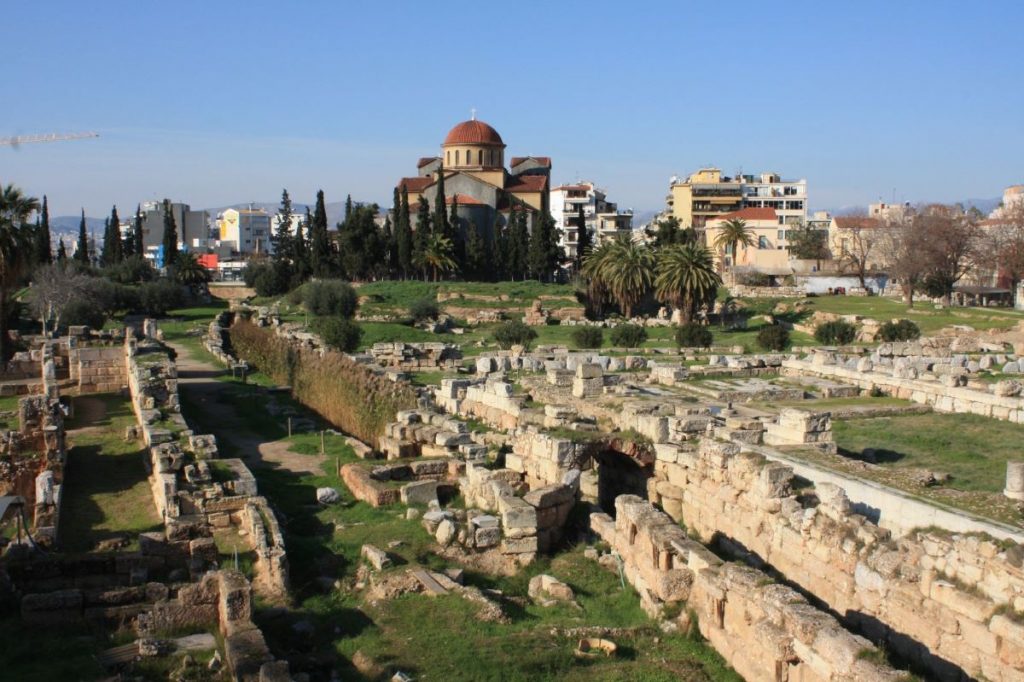
Greek Agora: The bustling center of Ancient Athens
The Ancient Greek Agora (Athens, 105 55) was the political, economic, and legal center of ancient Athens. In the Agora juries debated, courts were tried, wares were traded, and laws were created.
Today, ruins of these structures remain, some restored to superb condition. We think the most impressive is the Stoa of Attalos, once an ancient market, now fully restored into a museum and archaeological research center.
On the opposite side of the Agora, out in the open air, you can see the temple of Hephaestus, one of the best preserved Doric temples in the country. If you compare the temple of Hephaestus to the Acropolis you will notice several similarities in style and construction.
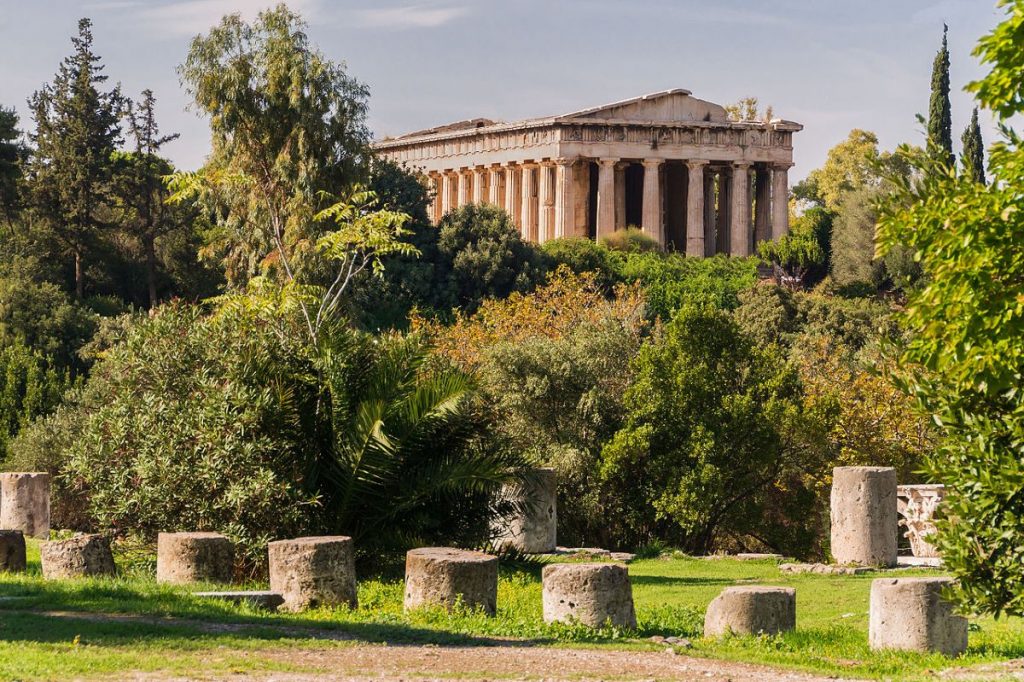
Filopappos Hill: A walk in the park amongst history
Not far from the Agora is Filopappos Hill, also called the hill of the muses. The hill and the surrounding valley have been made into a large park with little footpaths curling around the trees and ruins. We recommend strolling around and listening to the music buskers often stationed around the area before climbing up the steep inclines.
Once you make it to the top of Filopappos, you will see a monument to a monument the exiled Roman Prince Gaius Julius Antichus Philopappos of Commagene, as well as incomparable views– of the Acropolis, the sprawling buildings of Athens, and the Aegean Sea to the south.
On your way back down you can also check out a small building said to be the prison where Socrates, the great Greek philosopher died.
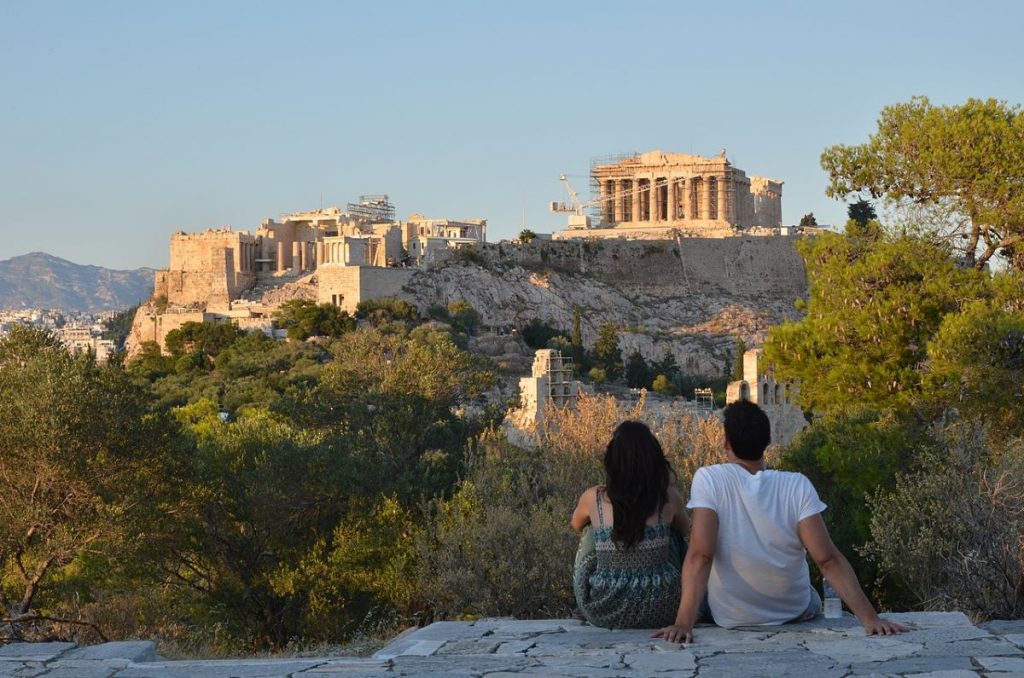
Run an Olympic lap at the Panathenaic Stadium
The Panathenaic Stadium, also known as the Kallimarmaro or “good marble” stadium is a bit outside of the path most tourists tread. This marble amphitheater was first built to host the Panathenaic Games, a sporting competition that honored the goddess Athena in her eponymous city, Athens.
The stadium originally had bleachers made of wooden seats, but it was renovated several times– first in 329 BC, then in 140 BC, and finally in 1986 AD to host the first modern Olympic games. The modern Athens marathon concludes in this stadium every year. On days without sporting events, you can take a jog around the track yourself, or ascend to the nose-bleed seats to catch a clear view of the Acropolis.
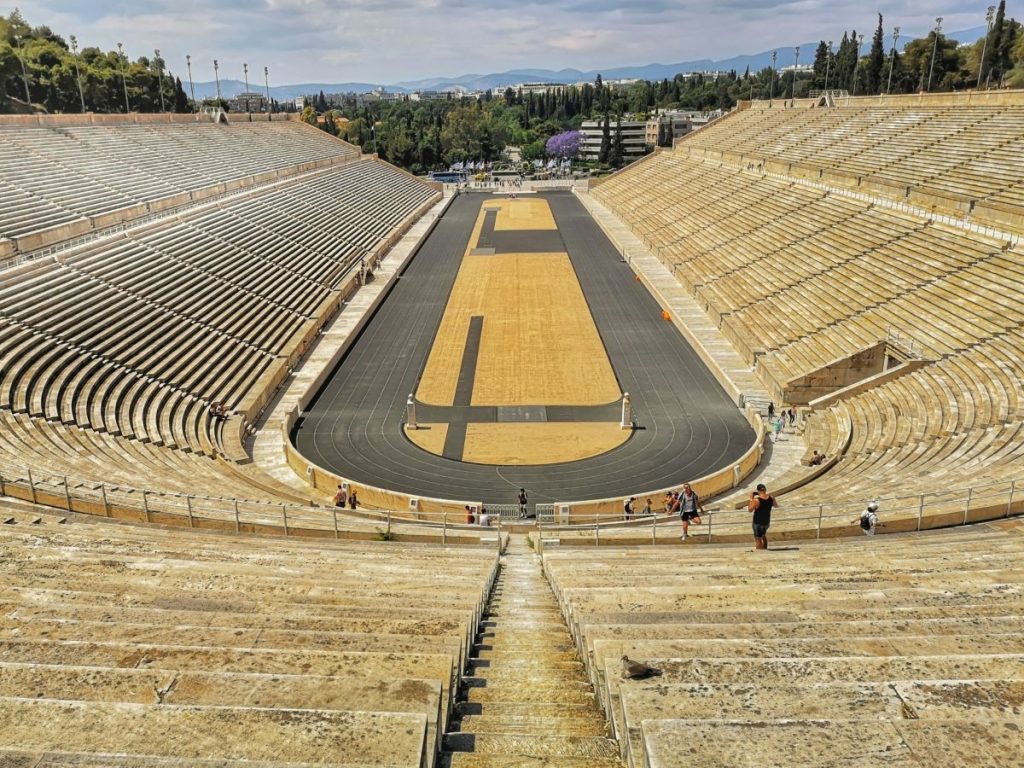
Seeing all these ancient Greek ruins jutting up from the geography of modern Athens is one of our favorite things about this city. It’s truly stirring seeing what the ancient Greeks accomplished, and the way these monuments still stand and rule over the city today.
Related Reading:
- Make sure you also check out our guide to the best Roman ruins in Athens. There are hundreds of years’ worth of monuments, temples, and structures amongst and on top of the ancient Greek ones.
